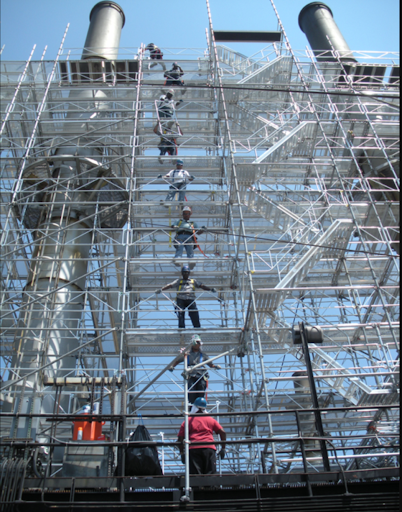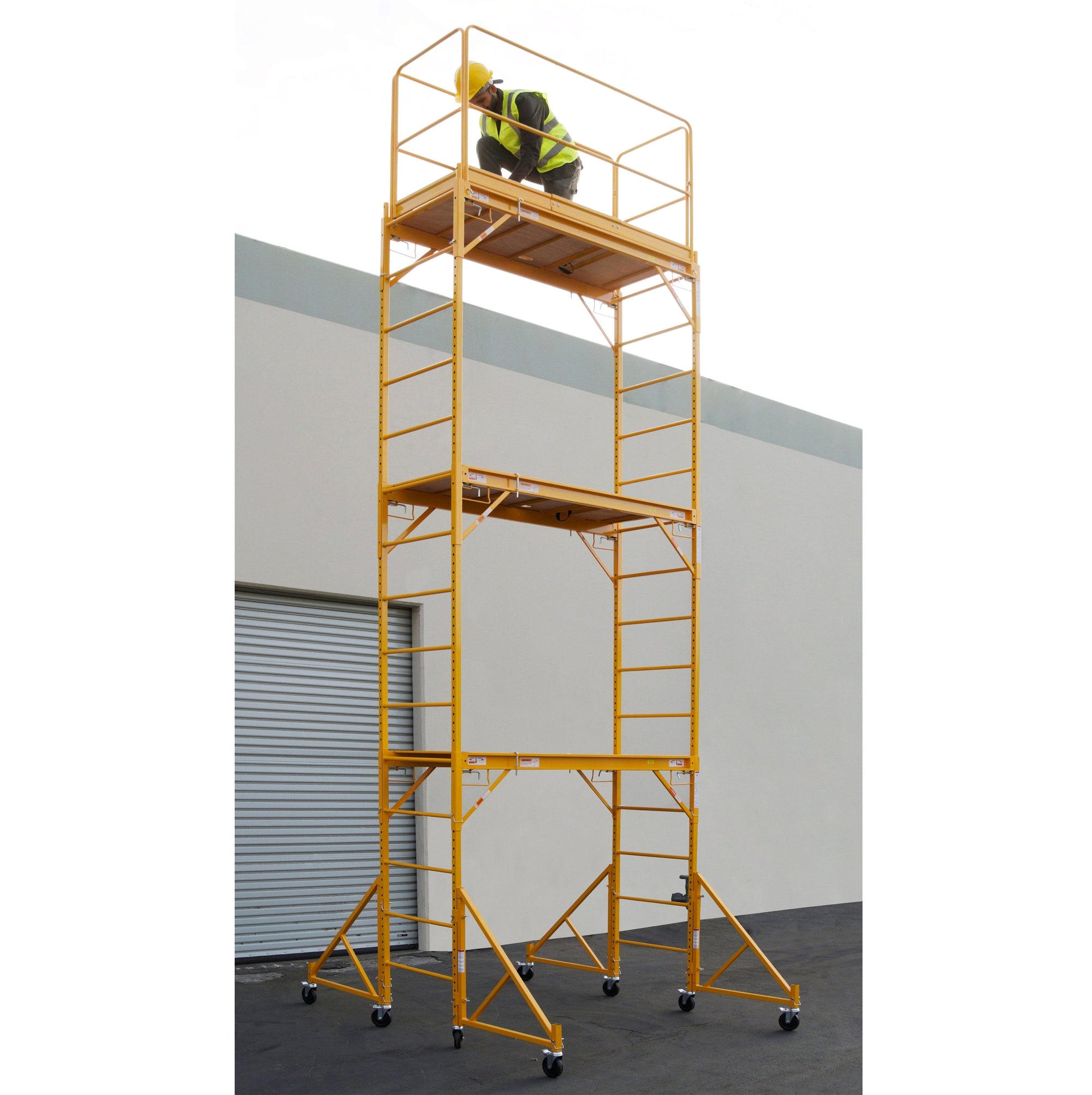Exploring the Different Kinds of Scaffolding Made Use Of in Building Projects
The construction industry counts heavily on numerous kinds of scaffolding to meet specific task demands, each offering distinct benefits and applications. Standard structure scaffolding gives a strong structure for basic jobs, while put on hold scaffolding is vital for job on skyscraper frameworks.

Traditional Framework Scaffolding
Typical frame scaffolding is among the most commonly made use of approaches in the building market as a result of its toughness and adaptability. This system is composed of upright and straight structures that are set up to produce a steady system for products and employees. The major components consist of upright blog posts, straight ledgers, and angled dental braces, which with each other supply a strong structure that can support substantial lots.
Among the vital benefits of traditional framework scaffolding is its adaptability to numerous building and construction projects, ranging from property buildings to huge commercial frameworks. The modular style allows for simple assembly and disassembly, making it effective for both temporary and long-term tasks. Furthermore, the system can be tailored in height and width, suiting different structure designs and site problems.
Safety is extremely important in scaffolding applications, and conventional frame systems are geared up with guardrails and toe boards to avoid falls and make sure worker security. In addition, regular inspections and adherence to safety and security regulations are vital in preserving the integrity of the scaffold. On the whole, typical frame scaffolding remains a fundamental selection in the construction industry, offering a dependable system for labor and boosting total task efficiency

Suspended Scaffolding
Suspended scaffolding offers an one-of-a-kind option for construction projects that need accessibility to elevated surfaces, especially in circumstances where typical framework scaffolding may be not practical. This sort of scaffolding is generally put on hold from the roofing or upper levels of a structure, making use of a system of sheaves, systems, and ropes to create a working room that can be gotten used to numerous heights.
Among the key advantages of suspended scaffolding is its versatility. It can be conveniently repositioned or decreased to fit changes in building demands, making it excellent for tasks such as home window installation, frontage work, and upkeep on high-rise buildings. In addition, the very little impact of put on hold scaffolding enables much better use ground space in urban atmospheres, where space is often minimal.
Safety is an important factor to consider in the usage of suspended scaffolding. In general, suspended scaffolding offers a reliable and reliable option for accessing hard-to-reach locations in different building scenarios, enhancing both efficiency and safety on site.
System Scaffolding
System scaffolding, commonly considered a modern service in the scaffolding market, consists of pre-engineered parts that can be swiftly set up and adjusted for various building and construction jobs. Scaffolding. This kind of scaffolding is defined by its modular design, which permits versatility and performance on work sites, fitting structural demands and various heights
Normally made from high-strength steel or aluminum, system scaffolding uses boosted durability and security. The parts include upright blog posts, horizontal ledgers, and angled braces, which interconnect safely, making certain a robust structure. The design usually integrates standard installations, streamlining setting up and disassembly processes, thereby reducing labor time and expenses.

Rolling Scaffolding
Moving scaffolding is a functional choice to standard fixed scaffolding, developed for movement and ease of usage on construction websites. This kind of scaffolding is composed of a platform supported by structures with wheels, allowing workers to conveniently relocate it as required. The mobility function considerably boosts performance, as it lessens downtime associated with dismantling and setting up fixed scaffolding.
Commonly constructed from lightweight materials such as light weight aluminum or steel, rolling scaffolding supplies a tough yet mobile solution for jobs needing regular repositioning Scaffolding near me - Scaffolding. It is especially helpful in jobs such as paint, drywall installment, and electric job, where accessibility to numerous elevations and places is required
Security is extremely important in rolling scaffolding layout, with attributes such as securing wheels to prevent unexpected activity when in use, and guardrails to secure employees from drops. Furthermore, several designs are adjustable in height, accommodating numerous project demands.
Cantilever Scaffolding

The style of cantilever scaffolding commonly involves utilizing arms or braces secured to a building or structure, enabling the system to prolong outside securely. Safety and security is vital; therefore, these scaffolds should be engineered to hold up against environmental problems and different loads. Normal inspection and maintenance are important to ensure structural integrity and worker safety and security.
Cantilever scaffolding is favored for its flexibility and reliable use area, making it a prominent selection in metropolitan environments where room restraints are common. Moreover, it assists in much easier accessibility to high elevations, inevitably adding to the general efficiency of building tasks. As with all scaffolding types, correct training and adherence to safety standards are crucial for employees making use of cantilever scaffolding.
Conclusion
Finally, the diverse kinds of scaffolding made use of in construction projects each offer distinctive objectives customized to particular site requirements. Typical frame scaffolding offers stability, while put on hold scaffolding offers flexibility for elevated tasks. System scaffolding assists in quick assembly, and rolling scaffolding improves flexibility for differing work atmospheres. Cantilever scaffolding successfully attends to barriers in city settings. Understanding these scaffolding types is necessary for maximizing safety and efficiency in building and construction, inevitably adding to the effective conclusion of tasks.
Typical framework scaffolding offers a durable foundation for general jobs, while put on hold scaffolding is crucial for job on skyscraper structures.Moving scaffolding is a functional choice to traditional set scaffolding, made for wheelchair and ease of usage on building sites. As with all scaffolding types, correct training and adherence to security standards are critical for employees making use of cantilever scaffolding.
Standard frame scaffolding supplies stability, while put on hold scaffolding uses flexibility for raised tasks. System scaffolding assists in fast assembly, and rolling scaffolding improves mobility for differing job settings.
Comments on “Find Reliable Scaffolding Services in Surrey for Your Project Needs”